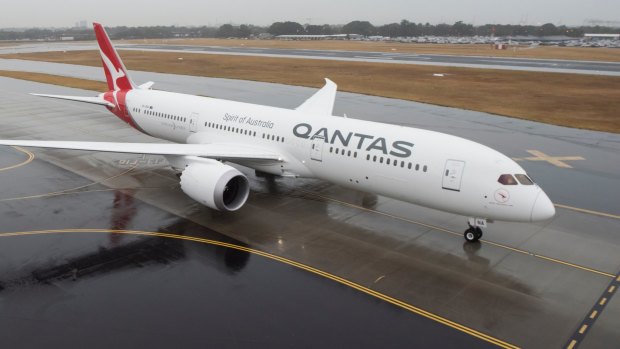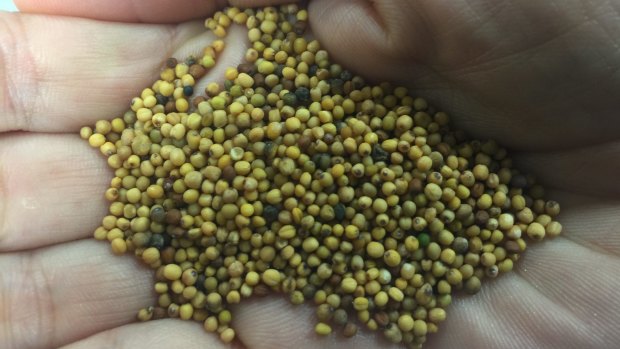This was published 6 years ago
Qantas 787 Dreamliner takes off fuelled by mustard seed biofuel on Los Angeles-Melbourne flight
By Donna Demaio
The world's first US-Australia biofuel flight took off on Monday, with a Qantas Boeing 787 Dreamliner filled with 24,000 kilograms of mustard seed-based, blended fuel.
The historic Qantas flight, QF96 from Los Angeles to Melbourne, is using biofuel extracted from a mustard seed Brassica carinata. The process has been developed by Canadian agricultural-technology company Agrisoma Biosciences.
Speaking at Los Angeles International Airport ahead of the flight, Qantas International CEO Alison Webster said it's fitting the Dreamliner is showcasing the future of sustainable aviation since the aircraft heralds a new era of innovation and travel.

The Qantas Boeing 787-9 Dreamliner will be the first plane to fly between the US and Australia powered by biofuel.
Across its life cycle, carinata-derived fuel offers more than 80 per cent reduction in carbon emissions compared with traditional jet fuel. The blend used in the Dreamliner between LA and Melbourne on Monday will see a 7 per cent drop in emissions along the route – with 10 per cent of its tank filled with the mustard seed-derived biofuel.
How does the biofuel work?
The carinata makes high-quality oil considered ideal for aviation biofuel, with one hectare of seeds yielding 400 litres of biofuel and 1400 litres of renewable diesel.

Carinata seed. One hectare of seeds yields 400 litres of biofuel and 1400 litres of renewable diesel.
The seed is sown in fallow areas where other food crops have failed or in between regular crop cycles and provides an added economic boon for farmers.
Agrisoma CEO Steve Fabijanski said he's looking forward to working with Australian farmers and Qantas to further develop a clean energy source for the aviation industry.
Why mustard seed?
Mr Fabijanski said mustard seeds are not only easily converted to jet fuel, there are other advantages including producing animal meal after the oil extraction.
"It's a tough crop. It grows where other crops won't grow. It doesn't need much water and it's well understood by farmers," he said. "They can grow it and do well with it."
Qantas aims to have flights running regularly on biofuel by 2020.
Ms Webster said that despite the unusual fuel, Monday's flight would be routine.
"The biofuel goes through exactly the same certification and tests as standard aviation."
That includes engineering, safety and performance checks.
Trials in Queensland and South Australia have indicated that the water-efficient crops should fare well in the Australian climate.
Qantas' historic flight comes after the airline was named earlier this month as the least efficient carrier in the region.
A report by the International Council on Clean Transportation found Qantas was the least fuel efficient and burnt the most carbon of major airlines that fly across the Pacific.
Qantas burns an average of one litre of aviation fuel to fly a passenger 22 kilometres, 64 per cent more than the 36 kilometres achieved by the region's two most efficient carriers – China's Hainan Airlines and Japan's All Nippon Airways – according to a study by the researcher that exposed Volkswagen AG's emissions cheating. The ICCT looked at 20 airlines that operate flights from mainland US to East Asia and Oceania in 2016.
Qantas said the study was flawed.
"The reason Qantas ranks low in this study is chiefly because we use larger aircraft, fly very long distances and have premium cabins that naturally have fewer people on board," Alan Milne, Qantas head of fuel and environment, said.
The writer travelled to Los Angeles courtesy of Qantas
with Bloomberg
Sign up for the Traveller newsletter
The latest travel news, tips and inspiration delivered to your inbox. Sign up now.